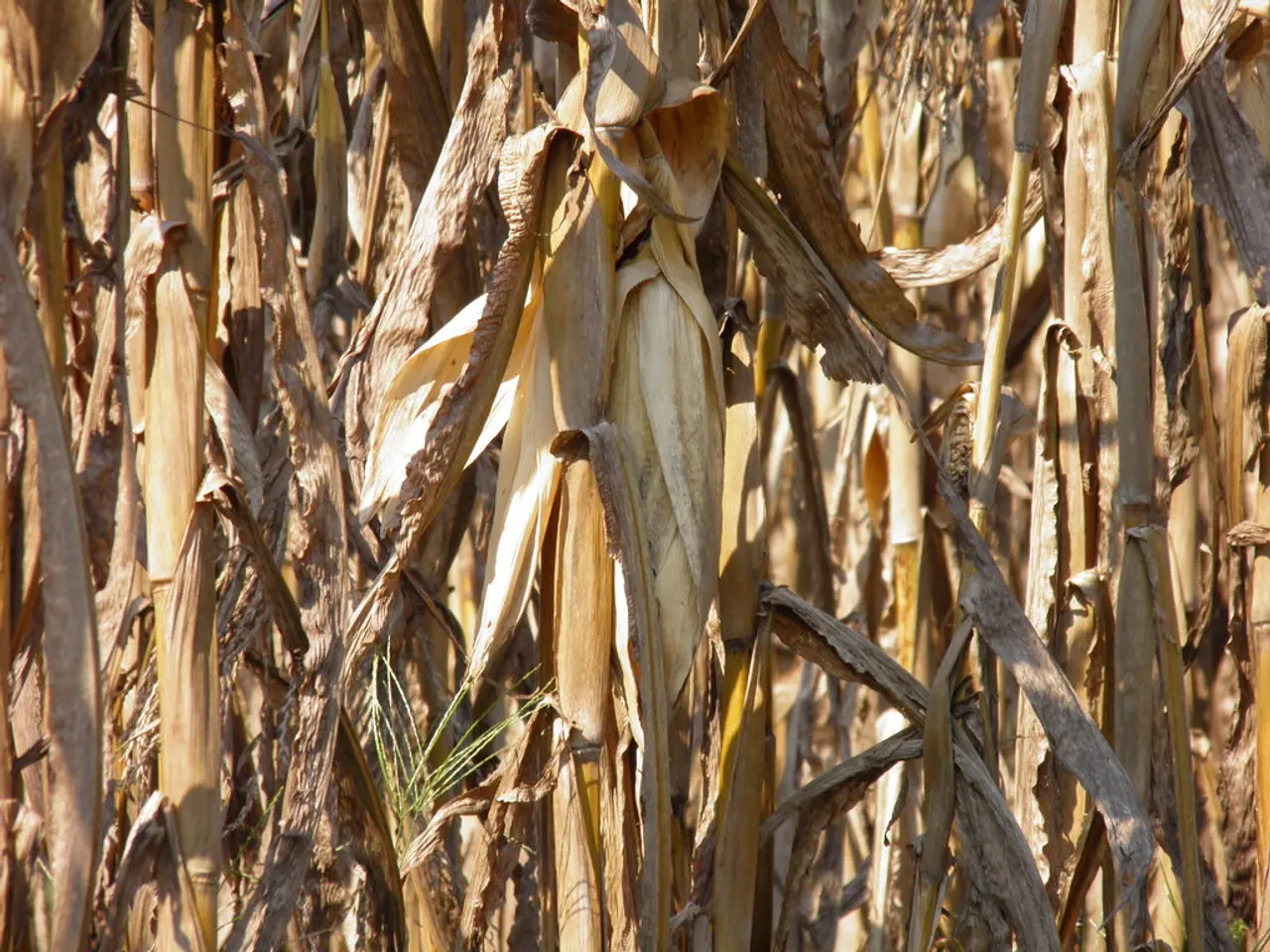Drought's Bite on Bavaria's Rivers: Navigation Nightmares and Water Sports Woes
Drought-induced decline observed in water levels on the Main and Danube rivers. - River drought has led to a decrease in water levels on the Main and Danube rivers.
The parched landscape of Bavaria is starved of rain, sending its rivers, particularly the Danube and Main, into a tailspin. This drought business ain't no joke, causing headaches for shipping businesses and water sports enthusiasts alike. Here's the lowdown:
The Danube's Desiccation
- Shrinking Waters: The Danube in Bavaria finds itself barely skimming the low water line, a spokesperson for the Waterways and Shipping Authority (WSA) Danube in Regensburg revealed to the German Press Agency. Low water is defined as when the water level dips below two meters, and it's been a bone-dry spell lately. On Monday morning, the level hit a paltry 2.03 meters. "We've been in a rainless rut for weeks," the spokesperson said, grimacing at the thought. No rain's on the horizon, so don't expect the Danube's water level to swell anytime soon.
- Shipping Shenanigans: Despite the drought, there's still no impact on shipping on Bavaria's longest river as of now. The WSA doesn't order a halt to shipping during low water like it does during high water. But if the drought persists, shipping could eventually turn into a costly headache for companies.
The Main's Meanderings
- Water Regulation: The Main, a tributary of the Rhine, is being kept in check. It's a regulated waterway, with locks regulating the flow to ensure levels don't dip too low. If the flow drops below a certain level, they'll slow down the locks.
- Unruffled Waters: For now, everything's copacetic, with water volumes flowing through still well above the corresponding limits. The situation's looking stable for the Lower Main, from its mouth in the Rhine to just before Würzburg, and even more so for the Upper Main, which enters the Main-Danube Canal at Bischberg (Bamberg district).
The Gravel Game on the Non-Navigable Main
Between Hallstadt near Bamberg and Hausen (Lichtenfels district), the non-navigable part of the Main's been hit hard. Canoes won't be rented out anymore due to exposure from the low water levels. A water level below 2.20 meters at Kemmern (Bamberg district) has been measured, and all canoeists and stand-up paddle boarders are asked to steer clear of that area. The closure's for the protection of the critters living in the gravel and underwater.
The Danube and Main: Drought's Playground
- International Impact: The Danube is a major European waterway, and drought conditions here have far-reaching consequences on international shipping and trade. Research also delves into the hydrodynamic and primary production effects on seasonal dissolved oxygen variability in the Danube River, which can be influenced by drought conditions.
- Main River Mischief: The Main River, although a tributary of the Rhine, doesn't always make headlines like the Danube when it comes to drought impacts. But make no mistake—the Main also feels the sting of the drought, affecting both shipping and water sports activities.
In a nutshell, Bavaria's rivers—the Danube and the Main—are caught in a vicious cycle of drought, resulting in reduced navigation for ships, economic woes for shipping businesses, and restrictions on water sports. It's a rough ride for both the local economy and the ecosystem, biting hard into the hearts of Bavaria's rivers and the people who rely on them.
- The prolonged drought in Bavaria could potentially disrupt vocational training programs focusing on environmental science and climate-change studies, as the few freshwater bodies available may not be conducive to teaching students about science and weather phenomena under normal conditions.
- To mitigate the effects of climate-change on Bavaria's rivers, vocational training programs for environmental scientists and engineers should consider incorporating updated strategies for water management, including innovative vocational training on drought resistance and sustainable water resource utilization in the wake of recurring drought events.








